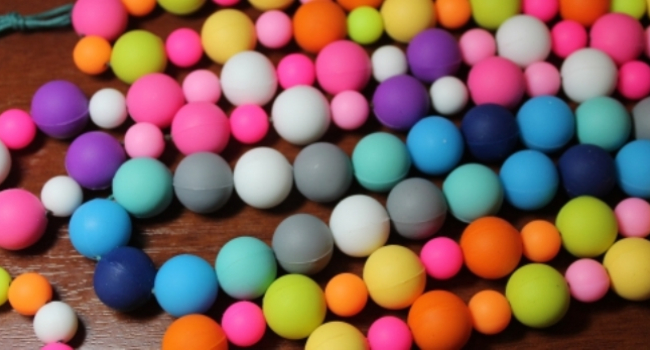- Latest news▼
-
16:41, April 15 Cell: in carriers of defective BRCA2 gene, sugar consumption increases cancer risk

-
15:04, April 15 305 cases of measles recorded in Armenia so far in 2024

-
14:38, April 15 Food and Environmental Virology: tea contributes to effective coronavirus control

-
12:41, April 15 Daily Mail: vitamin A, B3 and E supplements can be dangerous

-
10:56, April 15 Diabetes Care: evening physical activity is good for the heart

-
08:27, April 15 Women are more susceptible to blood loss and death during bypass surgery than men, researchers say

-
18:42, April 13 WHO: Nigeria pioneers revolutionary meningitis vaccine

-
16:43, April 13 One-third of women experience menstruation-related migraines, most often during premenopause - study

-
14:37, April 12 Pediatrics: Hypoglossal nerve stimulation implant helps with sleep apnea

-
12:13, April 12 Health minister: Simulation educational center will be created, assisted reproductive technology capacity will increase in Armenia

-
17:03, April 11 BMJ: antidepressant injection 4 times reduced risk of severe postpartum depression

-
11:35, April 11 Health minister: Number of hard-to-reach medical services within state funding scope increased in Armenia in 2023

-
16:10, April 10 Breathing therapy, which is so popular in the world, is starting to spread in Armenia

-
21:36, April 9 Frontiers: sun exposure destroys skin microbiome

-
17:24, April 9 EClinicalMedicine: depression increases the lethality of breast cancer

All materials
FDA Warns Against Use of Teething Necklaces, Bracelets, and Other Jewelry Marketed for Relieving Teething Pain or Providing Sensory Stimulation: FDA Safety Communication

Audience
Parents or caregivers of infants with teething pain.
Parents or caregivers of individuals with special needs, such as autism or attention-deficit/hyperactivity disorder (ADHD), who use necklaces and bracelets to provide sensory stimulation or redirect chewing.
Health care providers who interact with these caregivers who use or may consider using necklaces and bracelets marketed for relieving teething pain or providing sensory stimulation.
Medical Specialties
All primary care specialties including general pediatrics, pediatric dentistry, family medicine, general internal medicine, family and pediatric nurse practitioners.
Psychologists, psychiatrists, developmental and behavioral specialists, occupational therapists, physical therapists, general nursing and certified nursing assistants.
Product
Teething jewelry includes necklaces, bracelets, and other jewelry that can be worn by either an adult or child, and is often marketed to relieve an infant’s teething pain. The beads of the jewelry may be made with various materials such as amber, wood, marble, or silicone. Jewelry marketed for teething pain is not the same as teething rings or teethers, which are made of hard plastic or rubber, and are not worn by an adult or child.
Teething jewelry may also be used by people with special needs, such as autism or attention-deficit/hyperactivity disorder (ADHD), to provide sensory stimulation or redirect chewing on clothes or body parts.
Purpose
The FDA is alerting parents, caregivers, and health care providers that necklaces, bracelets, and other jewelry marketed for relieving teething pain should not be used with infants or to provide sensory stimulation to persons with special needs, such as autism or attention-deficit/hyperactivity disorder. Such use could lead to strangulation, choking, serious injuries, or death. The safety and effectiveness of teething jewelry to treat teething pain and/or provide sensory stimulation have not been established.
Summary of Problem and Scope
The FDA has received reports of death and serious injuries to infants and children, including strangulation and choking, caused by necklaces and bracelets often marketed for relieving teething pain. Parents and other caregivers may use these products to help relieve teething pain or to provide sensory stimulation in people with special needs. The risks of using teething jewelry include choking, strangulation, injury to the mouth, and infection. Choking may occur if the jewelry breaks and small beads or the whole piece of jewelry enter the child’s throat or airway.
The FDA received a report of a 7-month old child who choked on the beads of a wooden teething bracelet while under parental supervision and was taken to the hospital as a precaution. Strangulation can happen if a necklace is wrapped too tightly around the child’s neck or if the necklace catches on an object such as a crib. The FDA received a report of an 18-month old child who was strangled to death by his amber teething necklace during a nap. Other concerns include potential injury to the mouth or infection if a piece of the jewelry irritates or pierces the child’s gums.
Full article: FDA
Follow NEWS.am Medicine on Facebook and Twitter
- Video
- Event calendar
- Archive
- Most read
month
week
day
- Breathing therapy, which is so popular in the world, is starting to spread in Armenia 1783
- Frontiers: sun exposure destroys skin microbiome 1336
- EClinicalMedicine: depression increases the lethality of breast cancer 1335
- FEV: Black tea inactivates SARS-CoV-2 in saliva 1333
- BMJ: antidepressant injection 4 times reduced risk of severe postpartum depression 1107
- Health minister: Number of hard-to-reach medical services within state funding scope increased in Armenia in 2023 1068
- Pediatrics: Hypoglossal nerve stimulation implant helps with sleep apnea 968
- Health minister: Simulation educational center will be created, assisted reproductive technology capacity will increase in Armenia 932
- WHO: Nigeria pioneers revolutionary meningitis vaccine 765
- One-third of women experience menstruation-related migraines, most often during premenopause - study 745
- Women are more susceptible to blood loss and death during bypass surgery than men, researchers say 401
- Food and Environmental Virology: tea contributes to effective coronavirus control 385
- Daily Mail: vitamin A, B3 and E supplements can be dangerous 380
- Diabetes Care: evening physical activity is good for the heart 352
- 305 cases of measles recorded in Armenia so far in 2024 332
- Find us on Facebook
- Poll





